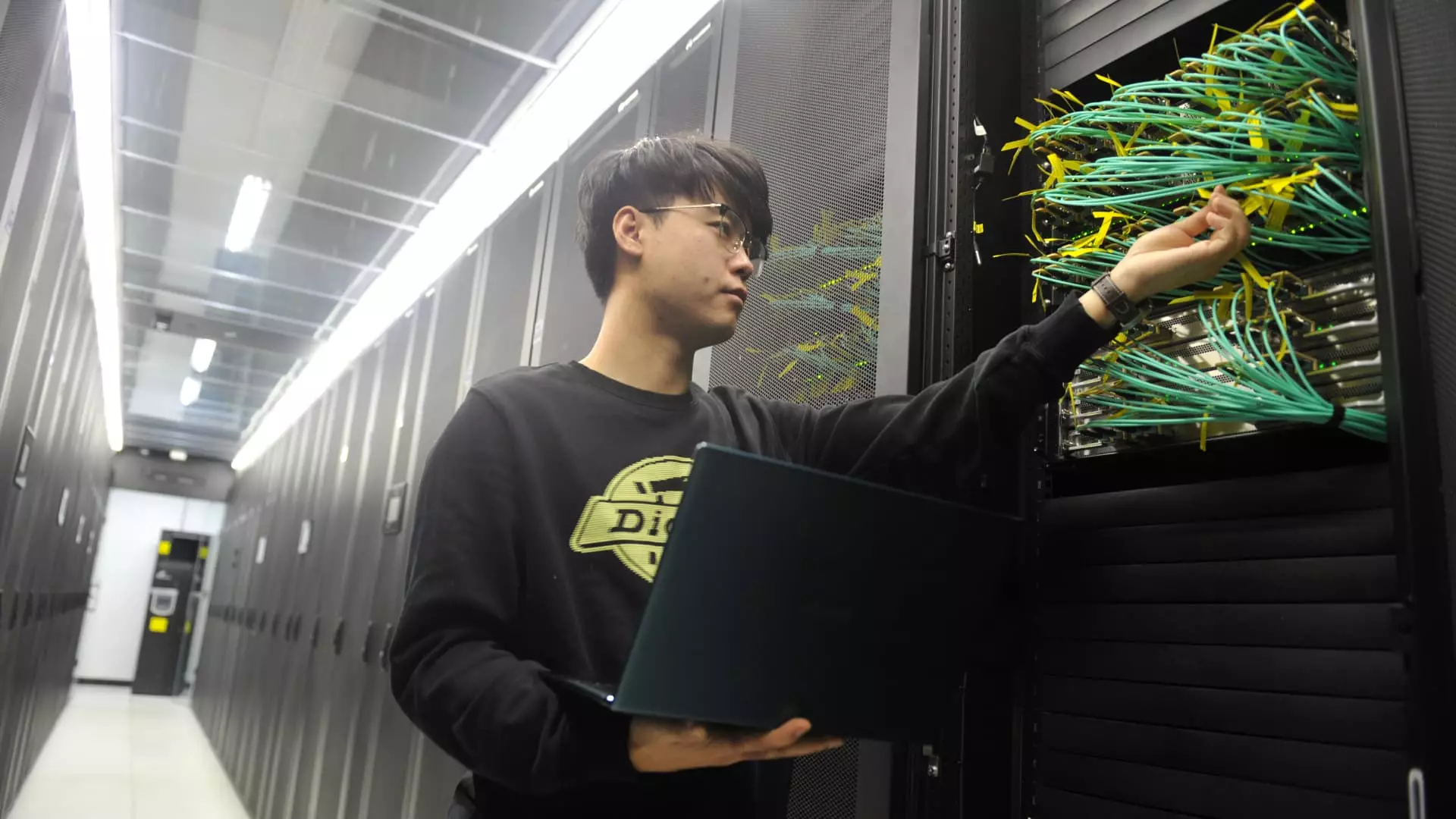The ongoing trade tensions between the United States and China are not just another chapter in international relations; they represent a growing fracture in global economic patterns that could redefine prosperity. Analysts are beginning to discern a paradox: while tariffs and sanctions proliferate, certain sectors—particularly around artificial intelligence (AI)—are thriving within China’s evolving economy. Companies like Kingsoft Office and Kingdee are racing to position themselves at the forefront of AI innovation, harnessing the government’s push for indigenous development as both shield and sword against external pressures.
The underpinning belief here is that AI technology is not just an upgrade to existing systems; it’s a transformative force capable of mitigating the repercussions of trade hostilities. The current geopolitical climate has pushed China to foster internal technological development, leading to an explosive growth trajectory for its AI sector. Amid these trade wars, one wonders if the U.S. should reconsider its strategy, as ongoing confrontation may inadvertently empower Beijing’s technological ambitions.
Government-Backed AI Revolution
China’s strategizing appears intent on flipping adversity into advantage by channeling investments into AI. While trade barriers with the U.S. tighten, Bernstein’s analysts predict that government-backed initiatives, particularly aimed at strengthening local technology firms, will fuel a robust AI ecosystem. The argument is made that these “AI+chip” synergies will help obviate tariff impacts and prepare the nation for a future centered around its technological prowess.
In this light, the metaphoric ‘DeepSeek’—symbolizing Chinese AI innovation—is more than just a tool; it’s a lifeline that Chinese companies are seizing upon. With competitive advantages realized through investment in AI capabilities—spurred on by favorable government policies—companies that once depended heavily on externally sourced technology are now creating competitive products that serve local needs while insulating themselves from geopolitical fallout.
The Resilience of Chinese Enterprises
Chinese tech firms are capitalizing on internal demand for AI solutions. The aggressively optimistic forecasts by investment analysts regarding Kingsoft Office’s performance exemplify this resilience. Despite the odds stacked against them, the monthly active users of their AI-enhanced WPS app surged to nearly 20 million, highlighting a critical shift in consumer behavior towards local solutions.
In a world riddled with uncertainty, Kingsoft’s efforts to innovate within the Huawei ecosystem illustrate a significant pivot. Such a strategy serves a dual purpose: it diminishes reliance on American technology and creates an entire market segment thriving under local ownership. It’s reasonable to project that as services such as WPS flourish, they will contribute directly to positive shifts in corporate earnings and could, in the grander scheme, redefine business dynamics in China.
Beyond AI: The Bigger Picture of Economic Growth
While the focus on AI software and applications is a bright spot, one cannot ignore the larger economic landscape being severely impacted by trade barriers. The growth outlook in China now faces pessimism due to severe tariff escalations. Goldman Sachs and Citi have both revised their projections downward, indicating a troubling reality where localized sectors remain straitjacketed by macroeconomic tensions.
Despite these clouds looming over the economy, the emphasis remains firmly on fostering domestic capabilities. The response to tariff pressures has also led to a noteworthy rise in interest towards cloud computing and internet data centers. As firms like GDS and Vnet showcase impressive revenue growth independent of U.S. reliance, it raises pivotal questions about the sustainability of this trend as they operate largely within a protective domestic environment.
Rethinking the Global Trade Paradigm
In the throes of a turbulent trade landscape, countries involved must grapple with evolving economic realities. The overarching narrative suggests a marriage between local ambitions and global tensions can lead to a strange yet symbiotic relationship. China may just be finding its new footing, showing that in times of adversity, innovation can thrive when nurtured by government ambition.
The resourcefulness of firms to pivot into AI-driven operations may signal a broader trend that other nations could learn from. If the U.S. remains too focused on punitive measures rather than fostering an ecosystem that encourages technological collaboration, it could risk being sidelined in an evolving global economy where China’s investments dictate the terms of engagement.
China’s ability to exploit its trade barriers isn’t just a learned behavior; it’s a manifestation of adapting to the geopolitical climate. Thus, framing the current U.S.-China relationship as strictly adversarial might understate the complexity of global economic interdependencies that continue to evolve, particularly in the realm of technology. Differentiating between competition and outright confrontation could be the key to shaping future policies that ensure balanced growth for both nations.


Leave a Reply